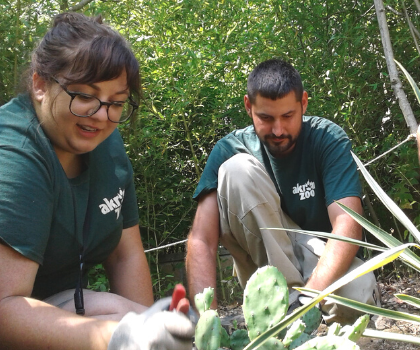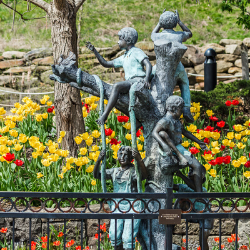Some invasions are hard to ignore, like invasion of privacy, invasion of personal space, or invasions from outer space! However, invasion by non-native plants and animals can often be overlooked, and these “alien” species can have dire consequences for our environment.
 Commonly thought of as harmless garden pests, invasive species negatively affect native animals and plants. This is a hugely underrepresented problem affecting biodiversity. Other drivers of extinction such as climate change, pollution, habitat loss, and depletion of natural resources tend to be the main focus of ecological discussion. As a result, the impact of invasive species is often overlooked, and the problem goes unchecked. Misuse of the term “invasive” also adds to people’s confusion, since many individuals use the term to describe pests that are aggressive, but native.
Commonly thought of as harmless garden pests, invasive species negatively affect native animals and plants. This is a hugely underrepresented problem affecting biodiversity. Other drivers of extinction such as climate change, pollution, habitat loss, and depletion of natural resources tend to be the main focus of ecological discussion. As a result, the impact of invasive species is often overlooked, and the problem goes unchecked. Misuse of the term “invasive” also adds to people’s confusion, since many individuals use the term to describe pests that are aggressive, but native.
As an urban park, the Akron Zoo is also susceptible to invasive species. Our horticulture team has taken steps to address invasives within the park, including identifying invasive or potentially invasive species and planning for their removal, teaching educational programs, and collaborating with other organizations to promote invasive species awareness.
There are several examples of invasive species in our area:
- Amur honeysuckle (Lonicera maackii) is a flowering shrub that has been shown to ‘trick’ native songbirds into nesting in their branches where their young are much more vulnerable to predators.
- Tree-of-heaven (Ailanthus altissima), a weak-wooded tree, and garlic mustard (Alliaria petiolata), an herby biennial, both secrete chemicals that strongly inhibit nearby plant and fungal growth.
- Purple loosestrife (Lythrum salicaria) is a pretty, wetland-loving perennial that leaches chemicals which can inhibit gill development and kill larval American bullfrogs.
The question I’ve heard most is, “If they’re so bad, why can I still buy them?” As of 2014, the Ohio Department of Agriculture and the Ohio Invasive Plants Council have banned the sale of 38 plants sold through nurseries. Unfortunately, it can take time for an invasive plant to be recognized and added to the list.
On the plus side, you don’t need to be a zoo horticulturist to start to make better choices for your green spaces. Invasive plant species are a problem where citizen science can make a very significant difference. Here are a few tips for keeping your garden healthy and invasion-free.
 Pay attention to your green space.
Pay attention to your green space.
- Take stock of the plants in your yard – especially the ones you don’t remember planting. Invasives tend to thrive in areas that don’t get mowed or weeded, like wooded edges and fence lines.
- Look for areas of “sameness” in outdoor spaces - large swaths of the same plants – or plants that seem to take over areas you frequent in just a season or two. These may be invasive.
- Stop the spread.
- Make a plan to remove plants you have identified as invasive on your property. Ask a zoo horticulturist for suggestions.
- Don’t move invasives! Seeds and pollen may cling to your gear, so be sure to clean gear after an outdoor adventure. Learn more at PlayCleanGo.org.
- When shopping for new plants, avoid certain red flags such as:
- “Vigorous grower”
- “The sale/distribution/trade of this product had been banned in MA, CT, NY, FL” etc.
- Get involved.
- Learning is always the first step! Ask a zoo horticulturist to help you identify a plant you suspect is invasive. Or, try plant ID apps like PlantSnap if you’re more of a self-learner.
- Found an invasive? Report it! Use the iNaturalist app or go to EDDMapS, a web-based mapping system, to document it. Experts can access your data for analysis.
- Look for volunteer opportunities near you to remove invasive species in public green spaces.
